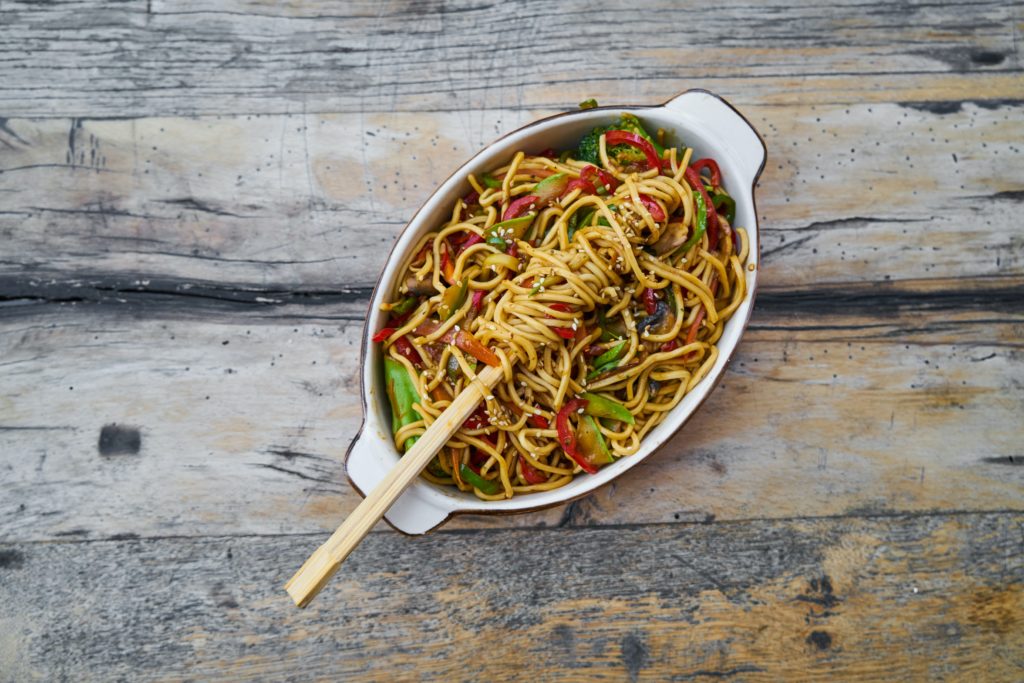Spaghetti is a long, thin, solid, cylindrical pasta. It is a staple food of traditional Italian cuisine. It has captured the hearts of people all over the world. From traditional Italian recipes to modern interpretations, this beloved pasta variety has evolved into a global culinary phenomenon. Like other pasta, it is made of milled wheat, water, and sometimes enriched with vitamins and minerals.
Origin of Spaghetti
Spaghetti’s origins trace back to ancient times, with evidence of pasta consumption dating as far back as 5,000 B.C. in China. However, it wasn’t until the 13th century that pasta made its way to Italy through trade routes. The word “spaghetti” itself comes from the Italian word “spago,” meaning “string” or

“twine,” referring to the pasta’s distinct shape.
This is because pasta is long and thin, like a string. It is made from durum wheat semolina, which is a hard type of wheat that gives the pasta its characteristic texture and flavor.
Types of Spaghetti:
- Traditional Spaghetti: This classic version is characterized by its long, thin cylindrical shape. It’s the most common type and is often paired with a variety of sauces.
- Whole Wheat Spaghetti: Made from whole wheat flour, this type offers a nuttier flavor and higher nutritional content due to its bran and germ content.
- Multigrain Spaghetti: A blend of various grains, such as wheat, barley, and quinoa, this type that adds complexity to both flavor and texture.
- Gluten-Free Spaghetti: Catering to those with gluten sensitivities, this type is typically made from alternative flours like rice, corn, or quinoa.
- Flavored Spaghetti: Infused with ingredients like spinach, tomato, or squid ink, this flavored type does not only offers unique colors but also subtle taste variations.
Cooking Techniques

Achieving perfectly cooked pasta requires attention to detail. It is typically cooked in boiling water until al dente, which means “to the tooth”. This means that the pasta is cooked through but still has a slight bite to it.
- Boiling Water: Bring a large pot of well-salted water to a rolling boil. Use approximately 2 quarts of water for every 8 ounces of spaghetti.
- Adding Spaghetti: Gently add the spaghetti to the boiling water, stirring initially to prevent sticking. Cook according to the package instructions or until al dente—firm to the bite.
- Testing for Doneness: To check if the pasta is ready, taste a strand a minute or two before the suggested cooking time ends. The pasta should have a slight resistance when bitten.
- Draining: Once cooked, immediately drain in a colander. Do not rinse, as the starch on the pasta helps sauces adhere better.
- Sauce Pairing: Toss the drained with your favorite sauce immediately after draining to ensure each strand is coated evenly.
Creative Spaghetti Recipes:
- Classic Spaghetti Carbonara: A Roman specialty featuring eggs, cheese, pancetta, and black pepper, creating a creamy and savory delight.
- Mediterranean Spaghetti Salad: A refreshing twist with cherry tomatoes, olives, feta cheese, and a lemon-herb vinaigrette, perfect for summer gatherings.
- Spaghetti Aglio e Olio: A simple yet flavorful dish made with olive oil, garlic, red pepper flakes, and parsley—a testament to the beauty of minimalism.
- Spaghetti with Pesto: Elevate your spaghetti with a vibrant basil pesto, pine nuts, and Parmesan cheese, creating a burst of fresh flavors.
Conclusion:
From its humble beginnings to its current status as a global culinary icon, this pasta has undoubtedly captured our hearts and appetites. Its versatility, whether in traditional Italian recipes or innovative adaptations, showcases its ability to adapt and delight across cultures and palates.
So, the next time you twirl a forkful of perfectly cooked pasta, remember the rich history and endless possibilities that this beloved pasta brings to the table.
Spaghetti can be served with a variety of sauces, including tomato sauce, meat sauce, pesto, and cream sauce. It is a popular dish all over the world. It is a versatile and affordable food that can be enjoyed by people of all ages. Also a good source of carbohydrates, which are the body’s main source of energy.






One Response